Related Research Articles

Calotype or talbotype is an early photographic process introduced in 1841 by William Henry Fox Talbot, using paper coated with silver iodide. Paper texture effects in calotype photography limit the ability of this early process to record low contrast details and textures. The term calotype comes from the Ancient Greek καλός, "beautiful", and τύπος, "impression".
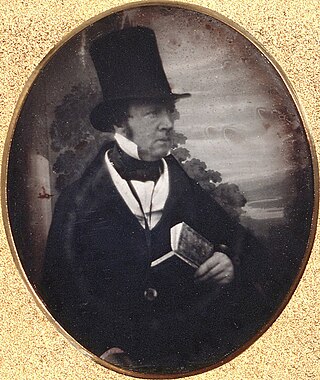
William Henry Fox Talbot FRS FRSE FRAS was an English scientist, inventor, and photography pioneer who invented the salted paper and calotype processes, precursors to photographic processes of the later 19th and 20th centuries. His work in the 1840s on photomechanical reproduction led to the creation of the photoglyphic engraving process, the precursor to photogravure. He was the holder of a controversial patent that affected the early development of commercial photography in Britain. He was also a noted photographer who contributed to the development of photography as an artistic medium. He published The Pencil of Nature (1844–1846), which was illustrated with original salted paper prints from his calotype negatives and made some important early photographs of Oxford, Paris, Reading, and York.

The collodion process is an early photographic process. The collodion process, mostly synonymous with the "collodion wet plate process", requires the photographic material to be coated, sensitized, exposed, and developed within the span of about fifteen minutes, necessitating a portable darkroom for use in the field. Collodion is normally used in its wet form, but it can also be used in its dry form, at the cost of greatly increased exposure time. The increased exposure time made the dry form unsuitable for the usual portraiture work of most professional photographers of the 19th century. The use of the dry form was mostly confined to landscape photography and other special applications where minutes-long exposure times were tolerable.

Roger Fenton was a British photographer, noted as one of the first war photographers.

John Dillwyn Llewelyn FRS FRAS was a Welsh botanist and pioneer photographer.

War photography involves photographing armed conflict and its effects on people and places. Photographers who participate in this genre may find themselves placed in harm's way, and are sometimes killed trying to get their pictures out of the war arena.
Talbot v Laroche (unreported) was an 1854 legal action, pivotal to the history of photography, by which William Fox Talbot sought to assert that Martin Laroche's use of the unpatented, collodion process infringed his calotype patent.

Robert Howlett was a British pioneering photographer whose pictures are widely exhibited in major galleries. Howlett produced portraits of Crimean War heroes, genre scenes and landscapes. His photographs include the iconic picture of Isambard Kingdom Brunel which was part of a commission by the London-based weekly newspaper Illustrated Times to document the construction of the world's largest steamship, the SS Great Eastern.
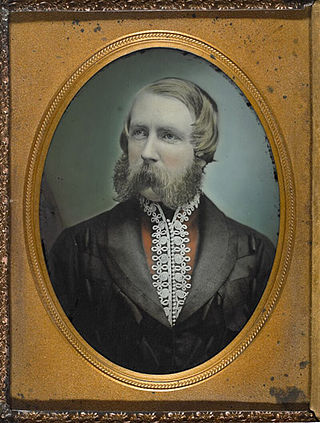
Farnham Maxwell-Lyte FRSC was an English chemist and the pioneer of a number of techniques in photographic processing. As a photographer he is known for his views of the French Pyrenees.
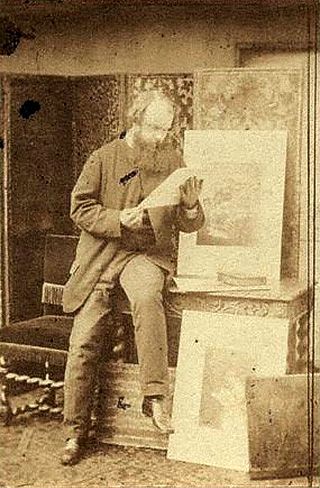
Joseph Cundall was a Victorian English writer under the pseudonym of "Stephen Percy", a pioneer photographer and London publisher of children's books. He provided employment for many of the best artists of the day by using them as illustrators.

Philip Henry Delamotte was a British photographer and illustrator.

Thomas Rodger was an early Scottish photographer. He studied at the University of St Andrews and was a protégé of Dr. John Adamson who also persuaded him to become a photographer. At age 14, he was apprenticed to Dr. James, a local chemist and druggist, whilst studying at Madras College. Adamson later taught him the calotype process which he had earlier taught his famous brother, Robert Adamson. Adamson persuaded him to assist Lord Kinnaird in his calotype studio at Rossie Priory. Rodger enrolled at the Andersonian College of Glasgow to study medicine, but Adamson persuaded him to set up a professional business in calotyping in St Andrews.

Peter Wickens Fry was a pioneering English amateur photographer, although professionally he was a London solicitor. In the early 1850s, Fry worked with Frederick Scott Archer, assisting him in the early experiments of the wet collodion process. He was also active in helping Roger Fenton to set up the Royal Photographic Society in 1853. Several of his photographs are in the Victoria and Albert Museum in London.

Robert Jefferson Bingham was an English pioneer photographer, mainly active in France, making portraits and reproductions of paintings. He is one of the first photographers to use and write about the collodion process, which he claimed to have invented.

Samuel Buckle was an early English photographer.
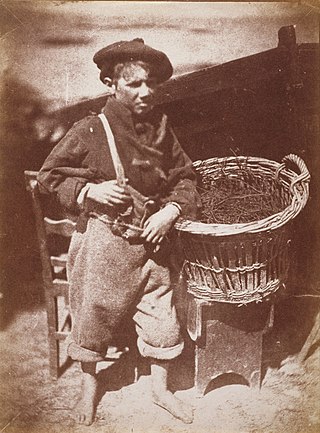
Scotland played a major role in the technical development of photography in the nineteenth century through the efforts of figures including James Clerk Maxwell and David Brewster. Its artistic development was pioneered by Robert Adamson and artist David Octavius Hill, whose work is considered to be some of the first and finest artistic uses of photography. Thomas Roger was one of the first commercial photographers. Thomas Keith was one of the first architectural photographers. George Washington Wilson pioneered instant photography and landscape photography. Clementina Hawarden and Mary Jane Matherson were amongst the first female photographers. War photography was pioneered by James MacCosh, James Robertson, Alexander Graham and Mairi Chisholm.
John McCosh or John MacCosh or James McCosh was a Scottish army surgeon who made documentary photographs whilst serving in India and Burma. His photographs during the Second Anglo-Sikh War (1848–1849) of people and places associated with the British rule in India, and of the Second Burmese War (1852–1853), count as sufficient grounds, some historians maintain, to recognise him as the first war photographer known by name. McCosh wrote a number of books on medicine and photography, as well as books of poetry.

Reverend Thomas Frederick Hardwich was a photographic chemist, writer on photographic chemistry, demonstrator and lecturer in photography at King's College London, and the author of A Manual of Photographic Chemistry including the practice of the Collodion Process, then later, curate of St John, Shildon, in the diocese of Durham.
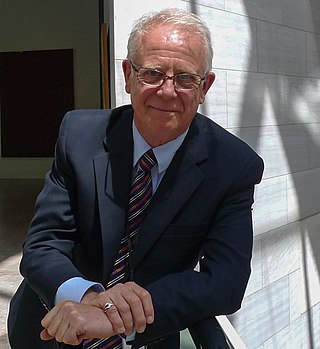
Roger Taylor, MVO born 1940, is a curator, photographic historian, and educator specialising in nineteenth century British photography and its social and cultural history. He is Professor Emeritus of Photographic History at De Montfort University.

Hugh Owen was one of the first generation of amateur photographers in the United Kingdom.
References
- ↑ All the Mighty World: The Photographs of Roger Fenton, 1852-1860. Metropolitan Museum of Art. 2004. p. 215. ISBN 9781588391285.
- 1 2 3 Taylor, Roger (2007). Impressed by Light: British Photographs from Paper Negatives, 1840-1860. Metropolitan Museum of Art. p. 50. ISBN 9781588392251.